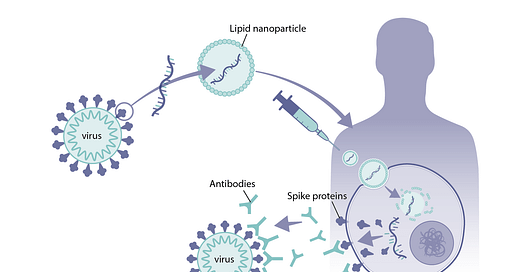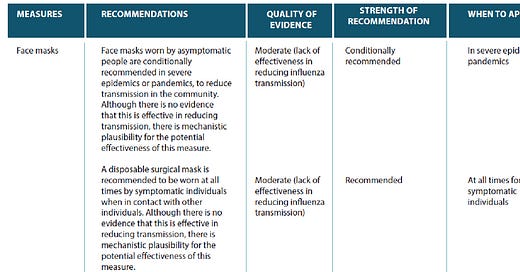
Discover more from Fear of a Microbial Planet
Image: Shutterstock AI
When an infectious disease researcher writes a research strategy section for a grant application, he/she begins by explaining why this particular disease is uniquely nasty and worthy of funding. Perhaps the disease has a high mortality rate, costs a lot of money to treat, or is increasing in the population. Maybe the disease is hard to diagnose, current treatments don’t work very well, or the microbes are increasingly resistant to the ones that used to work well, and there’s been no successful vaccine. Every researcher highlights these problems as much as possible, because they want the grant reviewers to understand there is a significant problem that needs to be solved, or a least better understood.
I study models of invasive aspergillosis, and I don’t have to embellish my introductory “scaragraph” too much, because it is a nasty infection. The pathogenic fungus Aspergillus fumigatus causes this disease in immune suppressed/deficient people, although it is practically non-existent in healthy people. Though uncommon, the main problems with aspergillosis are that mortality is above 50% and the number of immune suppressed/deficient people keeps increasing, because medical advances are allowing them to live longer and somewhat normally. Even worse, antifungal drugs aren’t all that great—they don’t kill on contact like many antibacterial drugs. Often, antifungal drugs merely keep the infection at bay. Furthermore, the same family of compounds used in antifungal drugs are also used in agriculture, which means the broader environment selects for resistance, and resistant strains are becoming easier to find. It’s indeed a nasty disease with a lot of problems to solve. For other invasive fungal infections, it’s a similar story.
The HBO TV show “The Last of Us” features a plot where a fungus infects humans causing a zombie apocalypse, and spawned a flood of fungal pandemic articles in media outlets like the BBC, Fortune, NPR, Forbes, etc. Some were more over-the-top than others, but the main messages were that fungal pathogens are understudied, not well-treated, and that a fungal pandemic is possible (all true except the last is unlikely).
I will give some of these authors credit for stating the obvious, that a fungal zombie apocalypse is extremely unlikely (i.e. ain’t gonna happen). The fungus in “The Last of Us” is very very loosely based on Ophiocordyceps unilateralis, a fungus that infects ants and essentially takes over their bodies (i.e. turning them into zombies). There simply isn’t any human equivalent, or even much of a possibility of one coming out of nowhere.
Yet the fungal apocalypse theme keeps reappearing in media articles, with the latest in Wired titled, “The Battle Against the Fungal Apocalypse is Just Beginning.” The doom-laden title is meant to attract eyeballs, and as I wrote in Fear of a Microbial Planet, selling fear always works like a charm. Proof of my point—this title is over-the-top fearmongering, and now I’m writing an article about it.
Despite the bowel-clenching title, the article makes some good points, but then proceeds to sensationalize them:
Candida auris is an emerging infectious yeast that can be transmitted between people, which is unusual for fungi, and is resistant to many antifungal drugs. Since it was ID’d in 2016, more than 10,000 cases have been reported. True.
The incidence of many other fungal infections is increasing:
“We don’t have good surveillance for fungal infections,” admits Tom Chiller, an infectious disease physician and chief of the CDC’s mycotic diseases branch. “So it’s hard to give a fully data-driven answer. But the feeling is definitely that there is an increase.”
The first explanation for increased fungal infections given by the author should already be familiar to you:
There may be multiple answers. More people are living longer with chronic illnesses, and their impaired immune systems make them vulnerable.
For me, this explains most of the increase. There are simply more susceptible people out there, and are increasing everywhere, even where you might not expect. In India, for example, uncontrolled diabetes has increased dramatically, and so has mucormycosis, a fungal infection of the eye, which infects people with uncontrolled diabetes. No surprise there.
Now comes more sensationalizing:
But the problem isn’t only that fungal illnesses are more frequent; it is also that new pathogens are emerging and existing ones are claiming new territory. When experts try to imagine what could exert such widespread influence, they land on the possibility that the problem is climate change.
There’s the vague catch-all term for something bad that’s happening to the environment that every bad weather observation seems to support—climate change (sounds a bit like Long COVID, doesn’t it?). Of course, climate is changing, it always has. Sometimes it changes slowly, and other times it changes more quickly. But for climate change doomthusiasts, it’s coming soon, it’s all our fault, and it’s going to hurt us very badly if we don’t give up our cars and our meat.
It’s true that many fungi are temperature sensitive, and as a result areas of fungal disease will fluctuate with climate. The article cites an interesting paper published years ago by a renowned researcher that hypothesized that fungi exploded after temperatures cratered when the dinosaurs were wiped out by a large meteor. It’s possible some of these fungi infected the cold-blooded dinosaurs more readily than the small-warm blooded mammals that eventually inherited the Earth, because mammalian body temperatures aren’t suited to their growth. Does this mean that warmer temperatures will cause fungi to adapt more quickly to infect mammals? Possibly, but then again, why didn’t fungi adapt to kill more dinosaurs and mammals when the climate was really warm?
In support of the climate change theory, the author gives a lab experiment as evidence, where a group of researchers showed that the gene mutation rate of the human fungal pathogen Cryptococcus neoformans increased dramatically when exposed to human body temperatures. Somehow lost in the article is the fact that C. neoformans is exposed to human body temperatures every time it infects humans, and that many places on Earth frequently reach 98.7F. So why would gradually rising temperatures make a significant difference to the evolution of this microbe?
Finally, the author attempts to deflect a very plausible alternative explanation:
Researchers who are paying attention to rising fungal problems make a final point about them: We’re not seeing more cases because we’ve gotten better at finding them. Tests and devices to detect fungi, especially within patients, haven’t undergone a sudden improvement. In fact, achieving better diagnostics was top of a list published by the World Health Organization last fall when it drew up its first ranking of “priority fungal pathogens” in hopes of guiding research.
Isn’t it possible that clinical labs have gotten better at diagnosing fungal infections by using existing techniques, even if those technologies aren’t as advanced for fungi as for bacteria and viruses? No one knew about Candida auris a few years ago, but now that clinical labs and physicians know what to look for, why wouldn’t that make a difference?
Bottom line—there’s not going to be a fungal apocalypse. I say this as a fungal immunologist that would certainly benefit from making the case for a fungal apocalypse, but I think we’ve had enough fearmongering the last few years for many lifetimes, and fearmongering ultimately further erodes public trust in scientists and public health “experts.”
I’m reminded of my days of coronavirus research, when I asked my graduate advisor if he would switch his focus to SARS(1) because of the funding opportunities resulting from the epidemic. No, he said, because SARS won’t stay in the spotlight unless there’s another outbreak. “We can only hope,” I joked. Many scientists benefit from the very thing they are working to understand or prevent. That’s simply human nature.
Although there are evolving challenges to understanding and treating fungal infections, I think those challenges can be overcome. I don’t have to claim an imminent fungal zombie apocalypse to tell you it’s important. But, of course, giving me lots of research money would help immensely.
Subscribe to Fear of a Microbial Planet
Fighting back against a germophobic safety culture.
















Thanks Steve. I’ve said many times that our equipment to detect minute temperature changes has improved dramatically and is far more accurate than it was 100 years ago. In addition, we are placing that equipment in places we didn’t travel to 100 years ago because it was just to hard. Those places have much more extreme temperatures. Add those to the mix and things start looking more extreme. Same goes for detecting “new” fungi and viruses. We can’t look for something that we don’t know about.
Science!
A great piece, Steve. Love that term -- "Scare-a-graph" Shows an entire field is limbiclly dominated on a broad scale level. Not conducive to systemic rational thought.